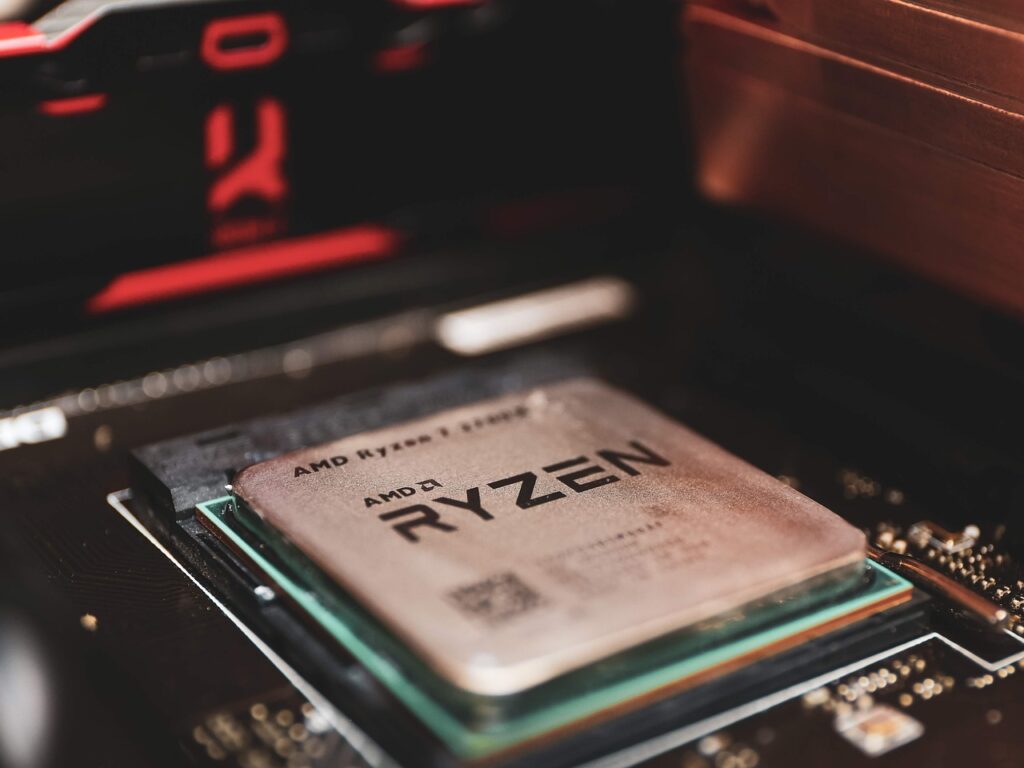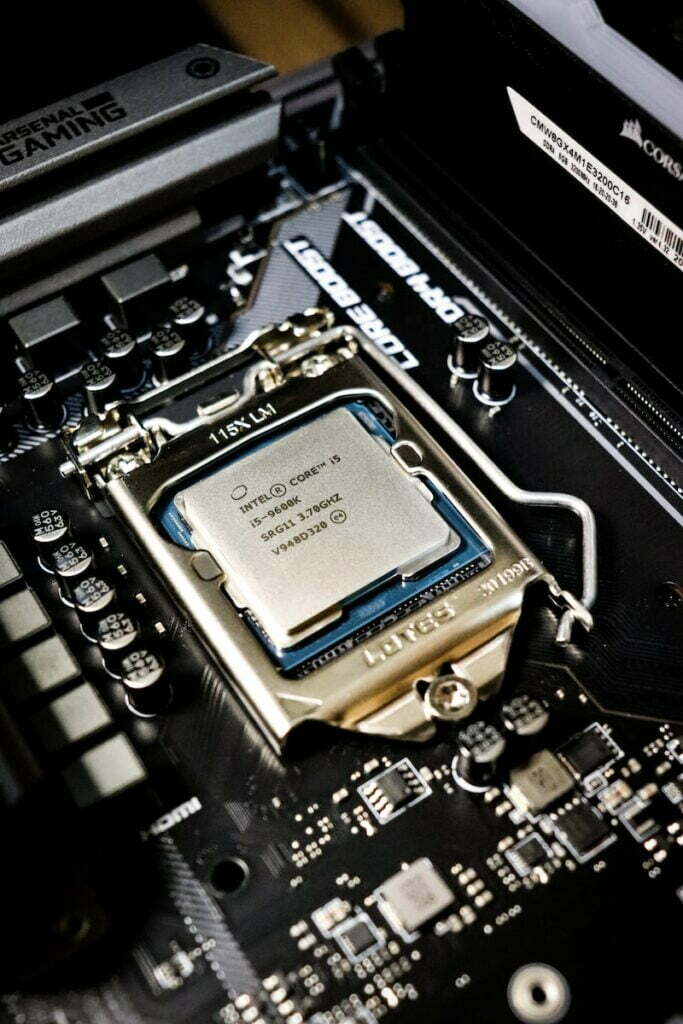LGA 1151: Everything you need to know
Contents
LGA 1151 is a land grid array socket that was launched in 2015. It has superseded LGA 1150 and is used on Intel’s CPUs.
The main difference between the two sockets is the number of pins – LGA 1151 has more than LGA 1150. Generally, chipsets with more pins provide more support for overclocking and higher speeds.
Check Intel & AMD Mobo Reviews.
LGA 1151 was designed to replace the aging LGA 1150 socket while also offering improvements over it. The additional pins on LGA 1151 offer increased stability and support for higher clock speeds, making it an ideal choice for gamers and power users who want to get the most out of their CPUs.
If you’re looking to upgrade your old CPU or build a new gaming rig, LGA 1151 is the way to go. In this article, we’ll cover everything you need to know about LGA 1151 including its key features, supported CPUs, and motherboards.
LGA 1151 – what is it?
LGA 1151, also known as Socket H4, is an Intel microprocessor-compatible socket that comes in two versions: a Land Grid Array (LGA) and a Pin Grid Array (PGA).
The former is used for Skylake and Kaby Lake CPUs while the latter is used for Coffee Lake CPUs. LGA 1151 has 1151 protruding pins that make contact with the pads on a CPU.
You might like reading knowledge base & solutions articles.
The benefits of LGA 1151
The main benefit of LGA 1151 is that it supports both DDR3 and DDR4 memory, which means that you can use either type of memory with your LGA 1151 motherboard. Additionally, LGA 1151 CPUs are compatible with a wide range of motherboards from different manufacturers.
The history of LGA 1151

LGA 1151 was first introduced in 2015 with Intel’s sixth-generation Skylake processors. It replaced the older LGA 1150 socket, which was used for fourth- and fifth-generation Intel Core processors.
In 2017, Intel released eighth-generation CPUs based on the Coffee Lake microarchitecture, which uses the new LGA 1151 v2 socket.
How to install an LGA 1151 CPU
Installing an LGA 1151 CPU is a relatively simple process.
- First, you’ll need to remove the existing CPU from the socket.
- Then, clean the socket by removing any dust or debris.
- Next, line up the notches on the CPU with the corresponding notches in the socket, and carefully insert the CPU into the socket.
- Finally, secure the CPU in place by locking the lever at the top of the socket.
Compatible GPUs for LGA 1151
Almost any modern GPU will be compatible with an LGA 1151 motherboard. However, if you’re looking for optimal performance, you’ll want to choose a GPU that’s specifically designed for use with an LGA 1151 motherboard.
For example, Nvidia’s GeForce GTX 1080 Ti is a good choice for gamers who want top-of-the-line performance.
Overclocking on LGA 1151
Overclocking is the process of pushing a CPU beyond its stock speed in order to boost performance. While overclocking can void your CPU’s warranty, it’s generally safe to do if you know what you’re doing.
If you’re interested in overclocking your LGA 1151 CPU, there are a few things you’ll need to keep in mind. First, you’ll need to choose a suitable motherboard and CPU cooler.
Find more PC Components here.
Additionally, you should make sure that your RAM is rated for high speeds. Finally, it’s important to start slow and increase speeds gradually to avoid damaging your hardware.
Goodbye old sockets, Hello new era!
LGA 1151 marks the beginning of a new era for Intel CPUs. With its support for DDR4 memory and higher pin count, LGA 1151 represents a significant upgrade over previous generations of sockets.
If you’re building a new PC or upgrading an existing one, LGA 1151 is the way to go.
Conclusion

A CPU, or Central Processing Unit, is the brain of your computer. It handles all the instructions your computer receives and sends out.
CPUs come in many different shapes and sizes, but they all have the same basic function. Choosing the right CPU for your needs can be tricky, but we hope this article has helped demystify the process a bit.
LGA 1151 is a land grid array socket that was released in 2015. It supports 6th to 9th-generation Intel processors on the LGA 1151 platform.
Frequently Asked Questions
What RAM does LGA 1151 support?
LGA 1151 supports 6th generation Intel Core i7/ i5/ i3/ Pentium/ Celeron processors.
The power phase design helps to support Intel Turbo Boost 2.0 technology. Additionally, 4x DDR4-2133 DIMM slots are available for a maximum capacity of 64GB.
What is the strongest CPU in 2022?
The Core i5-13600K is Intel’s best all-around CPU as of 2022. It offers great performance for gaming and other purposes and is a significant upgrade over its predecessor.
The only downside is that it is slightly more expensive than some of the other options on the market.
What generation does LGA 1151 support?
LGA 1151 supports 9th and 8th Generation Intel Core Desktop Processors. LGA 1150 was succeeded by the LGA 1151 in 2016, which was designed to replace it in generation ninth of Intel’s CPUs (Coffee Lake).
The main difference between the two is that LGA 1151 has more pins – 1,151 vs. 1,150 – which allows for more data transfer lanes and thus increased bandwidth.
Additionally, LGA 1151 can support both DDR4 and DDR3L memory, while LGA 1150 is limited to DDR3 only.
What is the strongest LGA 1151 CPU?
One of the best LGA 1151 CPUs is the Intel Core i7-7700K. It has a base clock speed of 4.2 GHz and a turbo boost speed of 4.5 GHz.
It has four cores and eight threads, making it a great choice for gaming and other high-performance tasks. It also has a thermal design power (TDP) of 95 watts, making it one of the more power-efficient CPUs on the market.
What does LGA 1151 support?
LGA 1151 supports a number of different Intel desktop processors, including Skylake, Kaby Lake, and Coffee Lake CPUs.
The socket is designed to provide support for both zero insertion force flip-chip land grid array (LGA) sockets and traditional LGA sockets.
The first revision of the socket supports both Skylake and Kaby Lake CPUs, while the second revision supports Coffee Lake CPUs exclusively.
What CPUs can fit LGA 1151?
There are four generations of Intel processors that can fit the LGA 1151 socket: 9th Gen, 8th Gen, 7th Gen, and 6th Generation.
Each generation offers better performance than the last, so if you’re looking for the best possible performance, you’ll want to choose a 9th Gen processor. However, all four generations will offer good performance for most tasks.
Is LGA 1151 and 1151 the same?
LGA 1151 and LGA 1151 Socket are one and the same thing. The former is just the shortened version of the latter, and both refer to the physical socket that helps connect a computer processor to a motherboard.
While there may be other types of sockets out there, LGA 1151 is by far the most popular option for those building personal computers. As such, it’s important to know what this type of socket entails before making any purchasing decisions.
Does LGA 1151 support i9?
The LGA 1151 socket and 300-series chipset are required for Intel’s 9th generation Core i9 9900K processor.
Motherboards for Intel processors are made with chipsets provided by Intel, each of which offers a unique set of capabilities. The capabilities offered by the 300-series chipset enable it to be compatible with the Core i9-9900K processor.
What CPU fits in LGA 1151 socket?
The LGA 1151 is a socket used by Intel for its desktop processors. 9th Generation, 8th Generation, 7th Generation, and 6th Generation Intel Desktop Processors use the LGA1151 socket.
Is LGA 1151 compatible with i7?
LGA1151 is the socket used by Intel’s 6th, 7th, 8th, and 9th generation Core processors as well as their Xeon variants. These processors are compatible with motherboards that have an LGA1151 socket.
- ASUS ROG Strix Z690-E Gaming Motherboard Review - November 21, 2024
- What are Motherboard Standoffs? - November 21, 2024
- Best Motherboard for Hackintosh - November 18, 2024